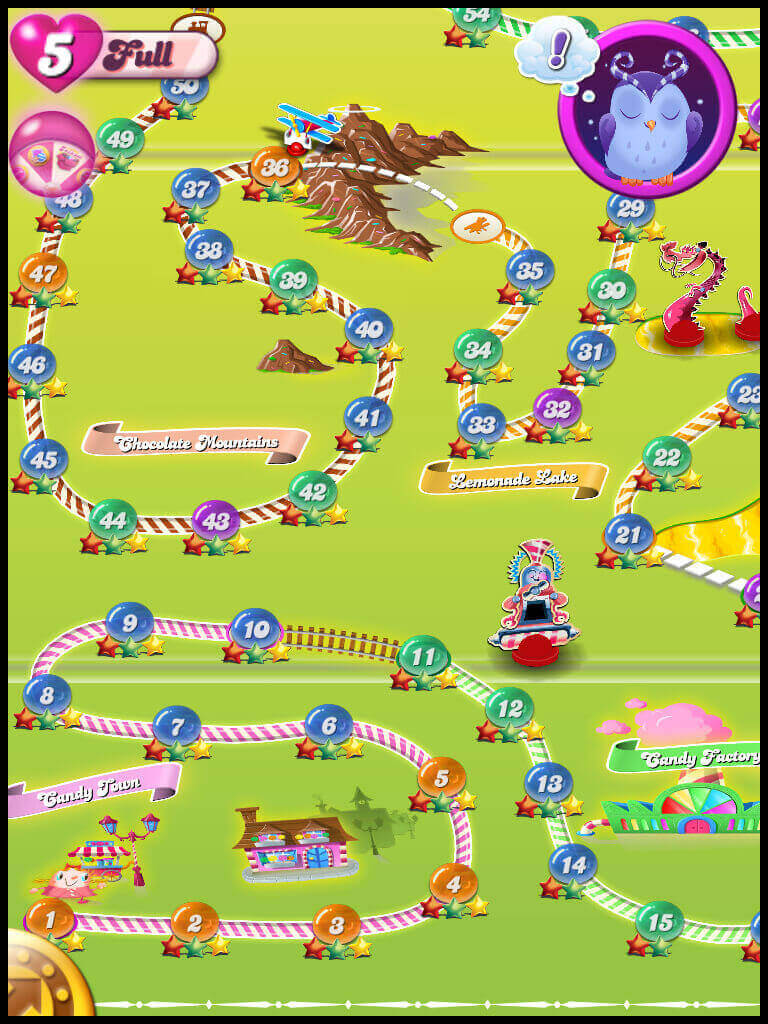Objective
The main objective of this post discusses the 3 simple principles that are used to build truly engaging and successful games.
How to build engaging games?
I recall having read an interview of a famous film director (perhaps Spielberg; I’m not sure) where he was asked what kind of movies turn out to be hits. His answer was simple: anything that touches the heart will be a hit.
This answer is equally true for the gaming industry (and almost everywhere else): if a game is fun to play, it will be successful.

That raises an interesting question: what makes a game fun to play?
Let’s reword the question: what makes a game engaging?
So if you are a game-designer, wouldn’t you like to design a game that’s engaging, magnetic, something that the gamer simply can’t put down?
Wouldn’t you like to create a game that people truly enjoy and keep coming back to?
Wouldn’t it be great if gamers loved your game and can’t have enough of it?
If your answer is yes, you’ll want to read on.
Great games, basically games that have been extremely successful, don’t just happen. Gaming companies go to great lengths understanding and applying scientific principles of human psychology in their games.
In this post, I’d like to share with you three simple, but extremely powerful, fundamental principles that no gaming company can ignore if it wishes to create games that really rock.
Principle 1 Game must be simple to start with
Remember Snake? the game that came bundled with Nokia handsets.

You just picked up your handset and started playing. There were no complexities. (In fact, it was so simple that, almost self-defeatingly, it was relatively easy even to design the game, not just play it...!)
There were too many versions to generalize the entire gameplay, but almost all had the following base.
There would be a line, called Snake, that could be moved around the screen. Its primary objective was to find and eat ‘food’ that would pop up randomly on the screen. Every time the Snake ate, it grew in length.
Moving the grown Snake around kept becoming increasingly difficult. Why? Because apart from eating 'food', your Snake was expected to keep away from obstacles like screen boundaries or walls of mazes and the Snake cant get tangled. If the Snake ran into a 'wall', it would die.
"The beauty of its simplicity lied in the fact that the Snake didn’t really need the walls as obstacles. The growing Snake itself was an obstacle; while taking a U-turn, if your Snake ran into itself, it’d still die."
So primarily the 'hero' or the central character of the game (Snake) was also the major obstacle in the game. And as the Snake kept growing, the risk of running into itself also grew!
And was it popular? Well, it originated in 1976 and as late as 2013, Nokia was still including it in its handsets. Thirty-seven years (and counting) is an awesomely popular time for a game, right?
"Don’t forget the mobile-gamers play games with sessions that may be as short as a minute. If understanding your game is going to take up 30 minutes, your game is in trouble big time."
Principle 2 Keep simple Key Requirements
The basic idea of all great games is simple.
- Clash of Clans requires you to Build Clans, Fight Battles and Win.
- Subway Surfers require you to run and Avoid The Trains.
- Temple Run requires you to keep out of reach of the devil as you escape with the valuables.
- Candy Crush requires you to...
You got the message, right?
If a game wishes to touch big numbers, the game should have some simple premise. The gamer doesn’t have the whole day to figure what she is expected to do in the game. Keep it simple, keep it easy to understand.
Saying the game is easy to understand is not to say it’s easy to master too. You know better.
On Temple Run, the devil is always hungry to chew you up:

Candy Crush has hundreds of levels:

You don’t meet too many gamers who’ve been all the way to the top in these games. Learning a game and mastering the game are two wholly separate things.
If you know about core game loop, I am talking exactly about that. Keep your core-game loop simple. Don't complicate it.
Principle 3 Tell me if i did well (Feedback)
Great games always offer levels. And why?
It is common human psychology to know what is one’s own performance
When a magician bows to her audience at the end of her act, she is looking for feedback.
When a footballer jumps in air after scoring a goal, he is looking for appreciation for his feat.
A number of games throw out canned applause when you clear a level: it’s not just false appreciation. It is a purposeful technique to let you know you’re doing fine and are ready to take up the next challenge, fight the next warrior, get to the next jewel.
"Levels in games explicitly show how well you’re doing."
Feedback that comes within 200 to 400 milliseconds after the completion of action registers best in human minds. So when the game instantly tells you you’re ready for the next level, you believe it. It becomes actionable: you move to the next level.

Players who get feedback are far more likely to play more or keep playing. Arranging the game in levels is a very strong signal of proficiency.
Finally, levels help gamers keep track of where they are in the larger scheme of things.
"Great, kid. Don’t get cocky"
This famous line by Han Solo (Star Wars) is perhaps apt to keep the gamers engaged. As soon as the gamer has cleared a level, you face another. The moment the gamer gets the "been-there-done-that" feeling, the game has lost the gamer.
The gamer needs to know where she is as compared to others. That’s what brought us leaderboards. When there’s someone at rank 2 with 78,713 points, you can’t possibly feel happy if you rank 30,789 with 11,144 points, right?

Levels also serve one more purpose: They challenge your ego.
Let me conclude with an illustration. Let’s say you are browsing your favorite social media site and come across two headlines:
- Interesting math puzzle: why not try it out?
- The puzzle only 2 percentage of people have been able to solve
Almost surely, you’ll click the second headline. That’s because it challenges your ego. Knowingly or unknowingly, you want to prove to yourself - and perhaps to the rest of the world - you belong to the top 2 percentile. (And the funniest part is most puzzles like this are actually quite silly! Probably most people would have been able to solve it anyway!)
It’s really instructing how human minds respond differently to different content. If we could understand the human mind better, we can surely create more successful products and reach out to many more people than we currently do.
That will be the common thread in all my subsequent posts.
Let me know what you think of this post.

An entrepreneur who has founded 2 flourishing software firms in 7 years, Tejas is keen to understand everything about gaming - from the business dynamics to awesome designs to gamer psychology. As the founder-CEO of a company that has released some very successful games, he knows a thing or two about gaming. He shares his knowledge through blogs and talks that he gets invited to.
